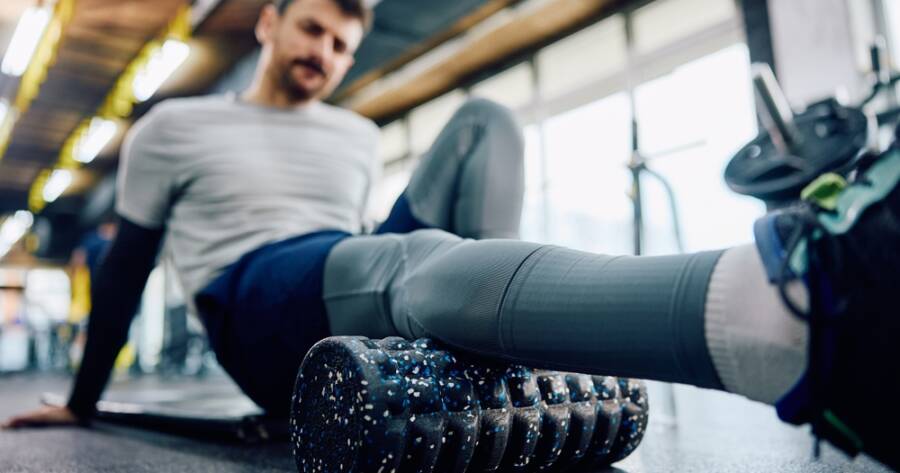Sore muscles and tight joints can slow you down, especially if you lead an active lifestyle. Fortunately, in 2025, foam rollers and massage guns make it easier than ever to recover from workouts at home. These tools boost circulation, reduce stiffness, and help you feel better faster. Learn which options truly deliver comfort, convenience, and performance—right from your living room.
Why At-Home Recovery Tools Matter More Than Ever
Whether you’re training for a marathon, working a physically demanding job, or just trying to stay mobile, recovery is essential. A consistent recovery routine can prevent injury, improve flexibility, and support long-term health. With more people working out from home or managing busy schedules, recovery tools like foam rollers and massage guns offer accessible ways to relax sore muscles without booking a professional massage.
Both devices work by targeting muscle tension. Foam rollers rely on body weight and pressure to break up tight fascia. Massage guns, on the other hand, use percussive therapy to stimulate deeper tissues. These two tools often complement one another, and many fitness enthusiasts use both as part of their post-workout routine.
Top Foam Rollers for Daily Muscle Relief
Foam rollers have been a staple in physical therapy and sports recovery for years. They’re lightweight, easy to use, and don’t require charging or setup. In 2025, several models stand out for their durability and design.
The TriggerPoint GRID foam roller remains a favorite among athletes for its firm, multi-density surface. It mimics the feel of a massage therapist’s hands and is ideal for deep-tissue work on larger muscles like quads and hamstrings. Users who want something gentler might prefer the LuxFit Premium roller, which offers consistent support without being too firm.
Newer options even include vibrating foam rollers, which add another layer of muscle stimulation. Devices like the Hyperice Vyper are used by personal trainers and physical therapists alike for their ability to improve circulation and reduce soreness in less time. Whether you’re working through a stiff back or recovering from leg day, foam rollers are affordable, effective, and easy to incorporate into a home recovery plan.
Best Massage Guns to Ease Tension and Tightness
Massage guns have become one of the most popular recovery tools on the market—and for good reason. These handheld devices deliver rapid pulses of pressure that help reduce muscle soreness and improve mobility. They’re particularly helpful for targeting small or hard-to-reach areas like the calves, shoulders, and lower back.
The Theragun Prime continues to be a go-to device thanks to its ergonomic design, multiple speed settings, and quiet operation. It’s strong enough for athletes, yet easy enough for beginners to use at home. Another standout is the Hypervolt Go 2 from Hyperice, which offers great portability without sacrificing power.
If you’re looking for a quieter, more budget-friendly option, the Renpho R3 is a compact massage gun that still offers several attachments and power settings. Many of these massage guns now come with smartphone apps that guide you through routines based on your fitness level and recovery goals.
What to Look for When Choosing a Recovery Tool
When picking a foam roller or massage gun, consider your specific needs and pain points. Foam rollers are often better for larger muscle groups or full-body stretching sessions. They’re great for warming up before exercise or winding down afterward. If you prefer a less intense experience or need help with posture and flexibility, foam rollers are a smart pick.
Massage guns, on the other hand, are better suited for targeted relief. If you suffer from muscle knots, tension headaches, or stiff shoulders, the focused vibration therapy can offer faster results. You should also consider battery life, noise level, and the number of attachments provided. Some massage guns include heads designed specifically for the spine, feet, or joints, which adds to their overall value.
Both tools can complement one another. For instance, many people start with a foam roller to loosen up the muscles, then follow up with a massage gun for deeper treatment. The combination can enhance blood flow, reduce inflammation, and help the body heal more efficiently between workouts or long workdays.
Real Results Without a Studio Visit
Many physical therapists and chiropractors recommend foam rollers and massage guns as a way to reduce reliance on in-office treatments. While professional care is sometimes necessary, daily recovery habits are key to maintaining mobility and comfort. With the right tools at home, you can stretch, release tension, and stay flexible—without booking appointments or commuting to a clinic.
What makes this even more appealing in 2025 is the rising quality of consumer-grade options. Devices that once cost hundreds of dollars are now more accessible, with brands competing to offer advanced features in lighter, quieter, and more affordable packages. Whether you’re easing post-workout soreness or managing chronic tension, there’s a reliable recovery tool to match your needs and budget.
Upgrade Your Recovery Routine Today
Foam rollers and massage guns aren’t just trendy gadgets—they’re essential tools that support your health, flexibility, and well-being. Investing in one or both can make a big difference in how your body feels each day.
Whether you want to bounce back from a tough workout or simply move more comfortably, at-home recovery tools bring relief within reach. With a little time and the right equipment, your path to pain-free movement starts today.

